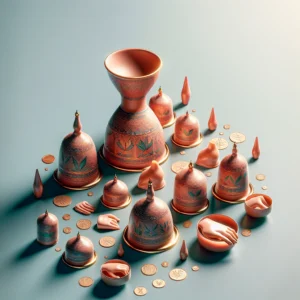Unlock Your Wellness Potential with Hijama Wet Cupping Therapy: A Path to Holistic Healing
Hijama, widely recognized as wet cupping therapy, is an ancient and revered healing modality that utilizes suction cups to extract blood from the skin’s surface. This unique process involves making a small incision to facilitate the release of blood, which is believed to aid the body in detoxifying by eliminating harmful toxins. The suction cups can be made from various materials—such as glass, bamboo, or silicone—and are carefully positioned on specific areas of the body to create a vacuum effect. This innovative technique not only improves blood circulation but also enhances overall wellness and holistic health.
During a Hijama session, the suction generated is thought to invigorate blood flow and amplify the body’s natural healing processes. Many clients describe a distinctive sensation of tightness or pulling in the areas where the cups are applied. Despite its unconventional nature, a significant number of individuals find the experience remarkably soothing, often leading to a deep sense of relaxation and improved wellness following their session.
Though Hijama may be unfamiliar to many, its therapeutic benefits have gained substantial recognition, making it a preferred option among those who advocate for holistic health. By delving into the complexities of this ancient practice, you can develop a profound appreciation for its remarkable ability to foster personal health and well-being.
Essential Insights and Benefits of Hijama Wet Cupping Therapy
- Hijama Wet Cupping Therapy stands as a respected alternative medicine technique that utilizes suction to promote healing and enhance blood flow.
- This method boasts a rich historical significance across diverse ancient cultures, including Egyptian, Chinese, and Middle Eastern societies, where it has served as a natural remedy for various health challenges for centuries.
- The extensive benefits of Hijama Wet Cupping Therapy encompass pain relief, improved circulation, detoxification, and an overall sense of relaxation.
- The Hijama technique involves creating small incisions on the skin and employing cups to extract blood and impurities from the body.
- Conditions such as migraines, back pain, arthritis, and respiratory issues can be effectively addressed through Hijama Wet Cupping Therapy.
 Tracing the Historical Roots and Development of Hijama Wet Cupping Therapy
Tracing the Historical Roots and Development of Hijama Wet Cupping Therapy
The origins of hijama can be traced back thousands of years, as detailed in ancient Egyptian, Greek, and Chinese medical texts. Among the notable figures, Hippocrates, often called the father of modern medicine, recognized its efficacy in treating a wide array of health issues. In Islamic culture, Hijama is held in high regard, frequently referenced in Hadiths—the sayings attributed to the Prophet Muhammad—highlighting its significance in these traditions.
This cultural endorsement has cemented Hijama’s lasting popularity, particularly within Muslim communities. As you explore the rich history of Hijama, you’ll uncover its dual purpose: addressing physical ailments while also fostering emotional and spiritual healing. Ancient healers believed that by removing stagnant blood and toxins, they could rejuvenate both physical vitality and emotional equilibrium.
Over the centuries, Hijama has evolved, integrating various techniques and philosophies from different cultures, resulting in the modern practice that is recognized today. Hijama has gained worldwide acclaim, with practitioners adapting age-old methods to align with contemporary health needs.
Discovering the Wide-Ranging Therapeutic Benefits of Hijama Therapy
The therapeutic benefits of Hijama wet cupping therapy are extensive and impactful, providing substantial relief for chronic pain conditions such as migraines, back pain, and arthritis following treatment. The suction created by the cups is believed to boost circulation, potentially resulting in reduced inflammation and faster recovery from injuries.
Furthermore, beyond physical benefits, many individuals report experiencing a reduction in stress and anxiety, leading to a holistic enhancement of their overall well-being. Additionally, practitioners often link Hijama to detoxification, as the therapy is thought to efficiently remove impurities from the bloodstream. This cleansing effect can lead to increased energy levels and a strengthened immune response.
As you reflect on the potential advantages of this therapy, it is important to recognize that individual experiences may vary significantly. While some patients report considerable relief, others might not notice immediate changes. Nonetheless, many practitioners suggest regular sessions as a vital part of a comprehensive holistic health and wellness regimen.
 An In-Depth Look at the Hijama Process: Essential Information for Participants
An In-Depth Look at the Hijama Process: Essential Information for Participants
Upon arriving for your Hijama session, your practitioner will begin by discussing your health history and any specific concerns you wish to address. This initial consultation is crucial for personalizing the treatment according to your individual needs. After ensuring your comfort, the practitioner will identify particular areas of your body for treatment, often concentrating on points that relate to your symptoms or areas of tension.
The therapy generally starts with dry cupping, where cups are placed on your skin to create suction without making any incisions. After a short period, the cups are removed, and small incisions are made on the skin using a sterile blade or lancet. The cups are then reapplied to draw out a controlled amount of blood.
Although this part of the procedure may appear daunting, many individuals report experiencing minimal discomfort during the incisions. Each session typically lasts between 30 minutes to an hour, depending on your tailored treatment plan.
Conditions and Ailments Addressed by Hijama Therapy: A Comprehensive Overview
Hijama wet cupping therapy is utilized to relieve a vast array of conditions and ailments. Numerous practitioners advocate for its efficacy in managing musculoskeletal issues, including back pain, neck pain, and joint discomfort. Athletes frequently seek Hijama for muscle recovery and injury prevention due to its ability to boost circulation and decrease inflammation.
In addition to alleviating physical pain, Hijama is also thought to provide relief for respiratory conditions like asthma and bronchitis by enhancing lung function and assisting in mucus clearance. Some individuals turn to this therapy to address digestive issues and hormonal imbalances. As you investigate the various uses of Hijama, it’s essential to consult with a qualified practitioner who can guide your treatment based on your specific health concerns.
 Important Safety Considerations and Potential Risks of Hijama Wet Cupping
Important Safety Considerations and Potential Risks of Hijama Wet Cupping
While Hijama wet cupping therapy is generally deemed safe when conducted by a trained professional, there are several risks and precautions to bear in mind. Temporary side effects, such as bruising or mild discomfort at the cupping or incision sites, may occur; however, these effects typically resolve within a few days.
It is critical to ensure that your practitioner adheres to strict hygiene standards to minimize the risk of infection. Certain individuals should approach Hijama with caution or refrain from it entirely. If you suffer from bleeding disorders, are pregnant, or have specific skin conditions, it is vital to discuss these factors with your practitioner prior to undergoing treatment.
By staying informed about potential risks and maintaining open lines of communication with your provider, you can make a well-informed decision regarding the suitability of Hijama for your wellness path.
The Rising Popularity of Hijama: Embracing a Modern Movement in Holistic Health
In recent years, there has been a significant surge in interest surrounding alternative therapies, particularly Hijama wet cupping therapy. As more individuals seek holistic health solutions, this ancient practice has regained prominence in both Eastern and Western cultures. Social media plays a crucial role in expanding awareness and information about Hijama, with countless users sharing their positive experiences and outcomes online.
The growing appeal of Hijama can also be attributed to a broader acceptance of integrative medicine, which combines traditional treatments with alternative therapies to create a more holistic healthcare approach. As you explore this trend, you may find that more wellness centers and clinics are integrating Hijama into their service offerings, making it increasingly accessible for those interested in exploring its potential benefits.
 Essential Tips for Locating a Qualified Practitioner for Effective Wet Cupping Therapy
Essential Tips for Locating a Qualified Practitioner for Effective Wet Cupping Therapy
Finding a qualified practitioner for Hijama wet cupping therapy is vital to ensure both safety and efficacy during your therapeutic journey. Start your search by looking for local specialists who focus on this therapy; many holistic health centers or acupuncture clinics frequently provide Hijama as part of their wellness services. It is important to seek practitioners who have formal training in cupping techniques and a proven track record of successfully treating various health conditions.
Before scheduling your session, consider reaching out for an initial consultation to discuss your health concerns and inquire about their treatment strategies. A reputable practitioner will take the time to understand your needs and offer a thorough explanation of the treatment process. Additionally, reading reviews or seeking recommendations from friends or family can help you find a practitioner who aligns with your health and wellness objectives.
By taking these informed steps, you can embark on your Hijama therapy journey with confidence, assured that your chosen practitioner possesses the required skills and expertise.
Frequently Asked Questions About Hijama Wet Cupping Therapy
What exactly is Hijama wet cupping therapy?
Hijama wet cupping therapy is a traditional form of alternative medicine where a therapist applies cups to the skin to create suction, which is believed to enhance healing by increasing blood flow and reducing inflammation.
How does the Hijama wet cupping therapy process work?
During Hijama wet cupping therapy, the therapist makes small incisions on the skin and places a cup over the incision to generate suction. This process draws a small amount of blood, which is thought to help expel harmful substances from the body and promote healing.
What are the potential benefits associated with Hijama wet cupping therapy?
Advocates of Hijama wet cupping therapy assert that it can assist with various conditions, including pain relief, inflammation reduction, improved blood circulation, detoxification, and enhanced relaxation. However, scientific evidence supporting these claims remains limited.
Is Hijama wet cupping therapy safe for everyone?
When conducted by a trained and qualified therapist, Hijama wet cupping therapy is generally regarded as safe. However, there exists a risk of infection if proper hygiene and sterilization protocols are not adhered to, underscoring the importance of receiving treatment from a reputable and experienced practitioner.
What side effects might occur following Hijama wet cupping therapy?
Some potential side effects of Hijama wet cupping therapy may include temporary discomfort, bruising, and mild skin irritation at the cupping site. In rare instances, there may be a risk of infection or scarring.
Who should avoid undergoing Hijama wet cupping therapy?
Hijama wet cupping therapy is not advised for individuals with specific medical conditions, such as hemophilia, leukemia, or those who are pregnant. Consulting with a healthcare professional prior to undergoing this therapy is essential, especially for individuals with underlying health concerns.
Presented By: Hijama Therapy
The Article: Hijama Wet Cupping Therapy Benefits You Should Know appeared first on https://mcrtherapies.co.uk
The Article Benefits of Hijama Wet Cupping Therapy You Need to Know appeared first on https://mcrtherapies.com/”>https://mcrtherapies.com
The Article Hijama Wet Cupping Therapy: Essential Benefits to Discover Was Found On https://limitsofstrategy.com



